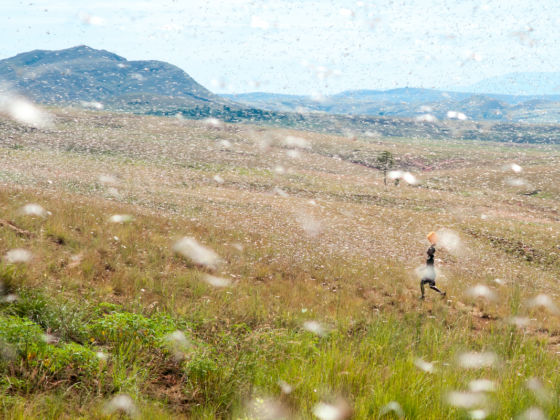In the past few weeks, East Africa has been experiencing its worst locust infestation in 25 years, threatening food security and livelihoods across an already vulnerable region, including Kenya, Somalia, and Ethiopia. An update on the situation by the United Nations on February 10, 2020, reported that the swarms have now crossed to Uganda and are threatening to infest Tanzania and South Sudan next.

Largest Locust Infestation in East Africa in 25 Years Spreads to Uganda
The insects that come in swarms of millions are devastating crops and pastureland throughout the Horn of Africa. According to the report, “An average swarm, which contains up to 40 million insects, can travel up to 150 km in a single day and can devour enough food to feed 34 million people within that time.”
Experts believe that the locust swarms were precipitated by heavy rainfall, which creates perfect breeding conditions for the insects. More rain expected in the coming weeks is sparking concerns that locust swarms could multiply up to 500 times by June, wreaking unimaginable havoc on the area.
According to Keith Cressman, senior locust forecasting officer at the UN Food and Agriculture Organization, “We know that cyclones are the originators of swarms — and in the past 10 years there’s been an increase in the frequency of cyclones in the Indian Ocean. Normally there’s none, or maybe one. So this is very unusual. It’s difficult to attribute to climate change directly, but if this trend of increased frequency of cyclones in the Indian Ocean continues, then certainly that’s going to translate to an increase in locust swarms in the Horn of Africa.”
A version of this article was previously published on January 27, 2020, and was updated on February 11, 2020, with more information.